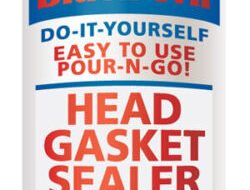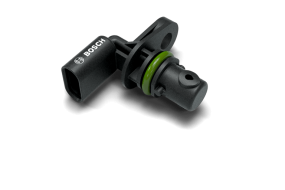
Overheating in cars is quite common but can also be a source of worry to the driver if it happens when coolant is in it. Coolant is responsible for cooling off the engine when the temperature begins to rise.
Since a car can overheat for various reasons even with coolant in it, the question is, why is my car overheating but it has coolant in it?
If your car is overheating with coolant in it, it means that the coolant is not circulating as it should which can be a result of a leaking water pump, bad thermostat, faulty cooling fan, etc.
What is an Overheating Car?
Overheating in a car is said to be when an engine rises above its normal temperature due to an issue somewhere in the cooling system.
The cooling system is responsible for cooling and letting heat out of the engine but when things aren’t going as they should inside, the car tends to overheat.
It is very easy to know when a car is overheating because there will always be signs. Some signs of overheating in a car are;
- Steam coming from under the car hood (usually looks like smoke)
- The temperature gauge on your dashboard turns red indicating a rise in temperature
- An unusual smell coming from the engine area
- Puddle of coolant on the ground
- The hood is hot
- Reduced engine power
Over time, the cause of overheating has been related to a lack of coolant but it is also possible for the car to overheat with coolant in it.
Dealing with overheating in a car can be very easy or may require taking the car to a repair shop.
Why Is My Car Overheating But it Has Coolant in it
Cars can overheat even when coolant is present inside the radiator reservoir, if this happens then something is wrong with some other parts of the engine. They are:
1. Erosion or Leaking Water Pump
The water pump is responsible for pushing water through the cooling system, if it is not being circulated well, it starts boiling and results in overheating of the engine.
When there is a leakage somewhere in the water pump, the water doesn’t flow as it should.
2. Clogged/Leaking Radiator
The radiator works to cool off a hot engine after which the cooled coolant is sent back to the engine to reduce the engine’s temperature.
The major issue with the radiator is usually leakage or clogging which slows down or prevents the flow of coolant. Common signs that a radiator is bad are often time overheating, leakage, etc.
3. Faulty Radiator/Cooling Fan
A cooling fan moves air across the radiator and cools off the heated coolant before it flows back inside the engine. A faulty cooling fan means there will be no air to cool the heated coolant leading to overheating.
4. Blocked Airflow
Adequate airflow is required to cool down coolant in the radiator as natural air flows inside the engine through the grate in front of the car.
Over time, this grate can be blocked by dirt, leaves, junk, etc., which prevents air from going through. Air that flows through the grate works with the cooling fan to cool down the coolant.
When a car overheats with coolant inside, it could also be a pointer that the airflow is blocked.
5. Malfunctioning Heater Core
The heater core is an extension of the radiator that helps to bring down the coolants to a considerable temperature. A common issue with the heater core is reduced pressure or leakage that results in overheating.
6. Worn Out Water Pump Belt
The water pump makes use of a belt called the Serpentine belt in carrying out its work. The belt helps in transferring energy to other parts of the car including the water pump.
A broken or worn-out belt will affect the flow of coolant thereby resulting in overheating.
What to Do If My Car is Overheating When I Have Coolant in it
Overheating in a car is frustrating and can leave one at a loss of what to do but not to worry, here are a few things you can do when your car starts to overheat with coolant in it:
Turn Off the A/C and Maximize the Heat
The first thing you should try to do is to reduce the stress on the engine by turning off the car A/C and then increasing the heat to its maximum.
Increasing the heat at the time may not look like the best option but it helps in reducing the engine temperature.
Pull Over
It isn’t safe to keep driving with an overheated car so the best bet is to pull over in a safe place. Pull over and shut off the car.
Shutting off the car gives the engine time to cool off, you can follow up with the cooling progress by checking the temperature gauge on the dashboard.
Call for Help
Adding coolant would have been good at this point but since the car has coolant in it you’ll be better off calling for help. You can call your mechanic to help you look into what the problem could be.
Restart the Engine
The ability of the car to start after it must have cooled down depends on the severity of the cause of overheating. If the car can restart, fine, but have it driven to a repair shop so the cause of the overheating can be diagnosed properly and fixed.
How to Prevent Your Car from Overheating When Coolant is in It
There are ways to prevent a car from overheating when coolant is in it, some of which are stated below:
- Check the Temperature Gauge as Often as You Can: Checking the temperature gauge will help you when the temperature of the engine is rising more than it should.
- Pull Over if there is an Increase in Temperature: Immediately you notice a rise in the temperature you should pull over and allow the engine to cool off.
- Change the Coolant Very Often: A full coolant reservoir can cause overheating if the liquid is old or contaminated, therefore, changing the coolant often will prevent overheating. Imagine having an oil in your coolant, it can cause more harm to your car.
- Carry Out Routine Maintenance: If you are the type of person that carry out car maintenance often, you or the mechanic will be able to detect problems with any of the engine components before it leads to overheating.
- Check the Coolant Cap: Make sure the coolant cap is covered very well to avoid leaking coolant that could cause the coolant level to drop.
Conclusion
Overheating is not something that should be ignored or nonchalant about because if nothing is done to fix it, it will result in more problems in the car. It is possible to prevent a car from overheating even with coolant in it, one easy way to do that is by carrying out car maintenance regularly.









